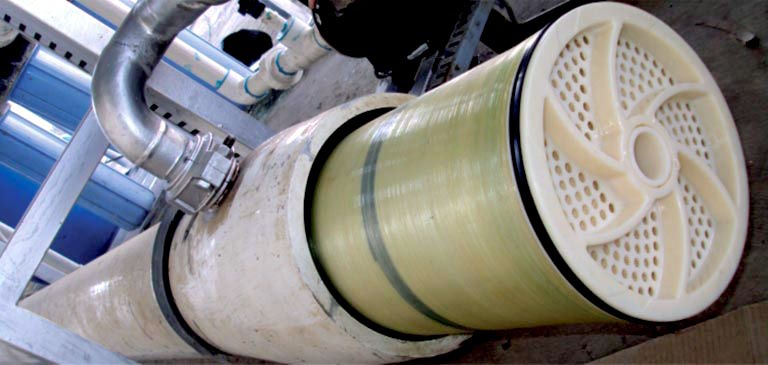Antiscalants are chemical compounds used to prevent mineral deposits from forming in water treatment systems, especially reverse osmosis (RO) and nanofiltration (NF) systems. These substances help improve the efficiency and lifespan of water treatment equipment by inhibiting the formation of crystals and deposits. In this article, we will examine the methods of using antiscalants, their applications, and their importance.
Definition and uses of antiscalant
Definition of antiscalant
Antiscalants are substances that help improve the efficiency and extend the life of water treatment equipment by inhibiting the formation of mineral deposits. These substances are usually polymer or phosphate compounds that prevent the formation of deposits by changing the shape and structure of crystals.
Antiscalant applications
- Reverse Osmosis (RO) Systems : To prevent mineral deposits from forming on RO membranes.
- Nanofiltration (NF) systems : to improve efficiency and reduce maintenance costs.
- Boilers and heating systems : To prevent the formation of deposits and increase the efficiency of boilers.
- Industrial water treatment : To prevent the formation of deposits in water treatment equipment and reduce maintenance costs.

Methods of using anti-scalant
1. Preparing the anti-scalant solution
Choosing an anti-scalant
The first step in using an anti-scalant is to choose the right type of anti-scalant based on the type of water and the ingredients in it. Consulting with water treatment experts and conducting preliminary tests can help you choose the best type of anti-scalant.
Solution preparation
Antiscalants are usually supplied as concentrated solutions and must be diluted to the appropriate concentration before use. Follow the manufacturer’s instructions carefully and prepare the solution using purified or deionized water.
2. Antiscalant injection
Installation of injection system
To inject antiscalant into the water treatment system, precise, chemical-resistant injection pumps must be used. The injection system must be installed in such a way that the antiscalant is injected into the water uniformly and accurately.
Injection flow rate adjustment
The antiscalant injection flow rate should be adjusted based on the system requirements and the amount of water consumed. Accurate adjustment of the injection flow rate helps improve the effectiveness of the antiscalant and prevent the formation of deposits.
3. Monitoring and control
System performance monitoring
Continuous monitoring of the performance of the water treatment system and the quality of the effluent water is of great importance. Measurement of various parameters such as pH, electrical conductivity and mineral concentration can help evaluate the effectiveness of the antiscalant.
Periodic settings
Periodic adjustments to the injection flow rate and anti-scalant solution should be made based on monitoring results and changes in water quality. These adjustments help improve system efficiency and reduce maintenance costs.
4. Equipment maintenance and replacement
Maintenance of injection pumps
Antiscalant injection pumps should be inspected and maintained periodically. Replacing worn parts and fine-tuning the pumps will help improve system efficiency.
Membrane cleaning
Membranes in RO and NF systems must be cleaned periodically to prevent scale formation and reduced efficiency. Using the appropriate cleaning chemicals and following the manufacturer’s instructions can help maintain membrane performance.

Benefits of using anti-scalant
1. Increase equipment lifespan
Using antiscalants helps extend the life of water treatment equipment. These substances help improve the efficiency and durability of equipment by preventing the formation of deposits and reducing damage caused by deposits.
2. Reduce maintenance costs
The use of antiscalants helps reduce the maintenance and repair costs of water treatment equipment. These materials help reduce operating costs by reducing the need to clean and replace membranes and components.
3. Improve system efficiency
The use of antiscalants helps improve the efficiency of water treatment systems. These substances help increase system efficiency and reduce water waste by preventing the formation of deposits and maintaining the quality of the outlet water.
4. Reduce energy consumption
The use of antiscalants helps reduce energy consumption in water treatment systems. These materials help reduce energy consumption and increase system efficiency by improving pump efficiency and reducing hydraulic resistance.
Safety tips when using anti-scalant
1. Use of protective equipment
When preparing and injecting antiscalant solution, protective equipment such as gloves, safety glasses, and protective clothing should be worn. This equipment helps reduce the risks of chemical exposure.
2. Follow the manufacturer’s instructions.
Follow the anti-scalant manufacturer’s instructions carefully and prepare the solution at the appropriate concentration. The amount of anti-scalant injected into the system should be based on the specific needs of the system and the amount of water used.
3. Proper storage of chemicals
Anti-scalant chemicals should be stored in sturdy containers with suitable lids. These materials should be stored in a cool, dry environment, away from flammable and corrosive materials.
4. Employee training
Employees who work with anti-scalants should receive training on the proper and safe use of these materials. This training helps reduce the risks associated with improper use of the chemicals.

Conclusion
Antiscalants are important chemical compounds that help prevent the formation of mineral deposits in water treatment systems. The use of these substances helps to extend the life of equipment, reduce maintenance costs, improve system efficiency, and reduce energy consumption. Proper methods of preparing, injecting, and monitoring antiscalants play a vital role in improving the efficiency and safety of water treatment systems. By observing safety precautions and using antiscalants correctly, water quality can be improved and operating costs can be reduced.